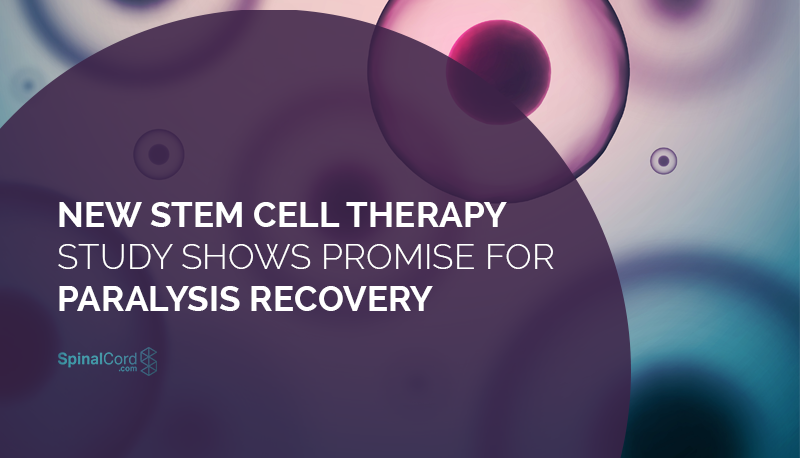New Stem Cell Therapy Study Shows Promise for Paralysis Recovery

An experimental Asterias Biotherapeutics stem cell study improved mobility in paralyzed spinal cord injury patients. The study data is preliminary, and the full study has not yet been published in a peer-reviewed journal. Researchers presented their results at the International Spinal Cord Society meeting in Vienna, Austria.
Stem cell therapies have long been marketed as a holy grail for a range of diseases, including spinal cord injuries. The new data suggests that further research could point toward a cure for spinal cord injuries.
“I am very encouraged by this first look at efficacy data for [stem cell therapy] in complete cervical spinal cord injury patients,” said Shekar N. Kurpad, MD, PhD, a lead researcher for the trial, in a statement. “As a clinical investigator in the trial, I am looking forward to continuing the evaluation of this promising new treatment in these patients, for whom effective new therapeutic options are desperately needed. I am hopeful that we are able to see these early, positive efficacy trends continue as the study progresses.”
Promising New Stem Cell Research
The study involved five patients with complete spinal cord injuries. To test the efficacy of stem cells, a doctor injected 10 million embryonic stem cells dubbed AST-OPC1 into the spinal cords of each participant. Each patient underwent the injection two to four weeks after his or her injury, before scar tissue could impede the action of stem cells.
Three months after the injection, two patients achieved a two-level improvement in motor skills on at least one side of the body. Each improvement level correlates with a significant reduction in the need for assistance. One patient regained use of his hands and arms. He can use a phone, feed himself, and operate a wheelchair.
The study’s authors did not expect to see improvements so quickly, and had originally planned to release the data within six to twelve months of the study’s inception. Because the data is so promising, they released it early. The study will continue to follow participants for at least twelve months. Full data will be available in early 2017.
Understanding Stem Cell Therapy
Stem cells are undifferentiated cells, usually in the early stages of development. The cells eventually differentiate into specialized cells for the body’s various tissues and organs.
Research suggests that when stem cells are implanted into the body, they develop into differentiated cells associated with that specific region. For example, stem cells implanted into the calf would develop into muscle cells. Stem cells exist throughout the body, but can also be extracted from undeveloped embryos.
Although stem cell research is in its infancy, researchers hope that stem cells could eventually be used to treat a range of degenerative conditions. Theoretically, any condition that impedes the function of the body's cells could respond to stem cell therapy.
Stem cells don’t appear to cause any side effects, which means stem cell therapy might be superior even to tried-and-true treatments, since almost every drug has side effects. Early stem cell study results have been mixed.
Future Research Possibilities
The latest study offers some hope to spinal cord injury patients. However, a “cure” for spinal cord injuries is still a distant fantasy. While stem cell research provides a reason to be optimistic, the results of the current study are preliminary, and have not yet been peer-reviewed. Peer review is the process by which researchers’ data is systematically reviewed and critiqued, and is fundamental to scientific research.
The study was small. While there is no reason to doubt its results, the data from small studies often fails to replicate in larger studies.
The researchers associated with the latest study are already planning further research to test their results. They have already secured regulatory approval to double the stem cell dose to 20 million cells. With 10 million cells producing such large improvements, it is possible that 20 million cells could yield even greater results.
Stay Updated on Advancements On Traumatic Brain &
Spinal Cord Injuries
About the Author





